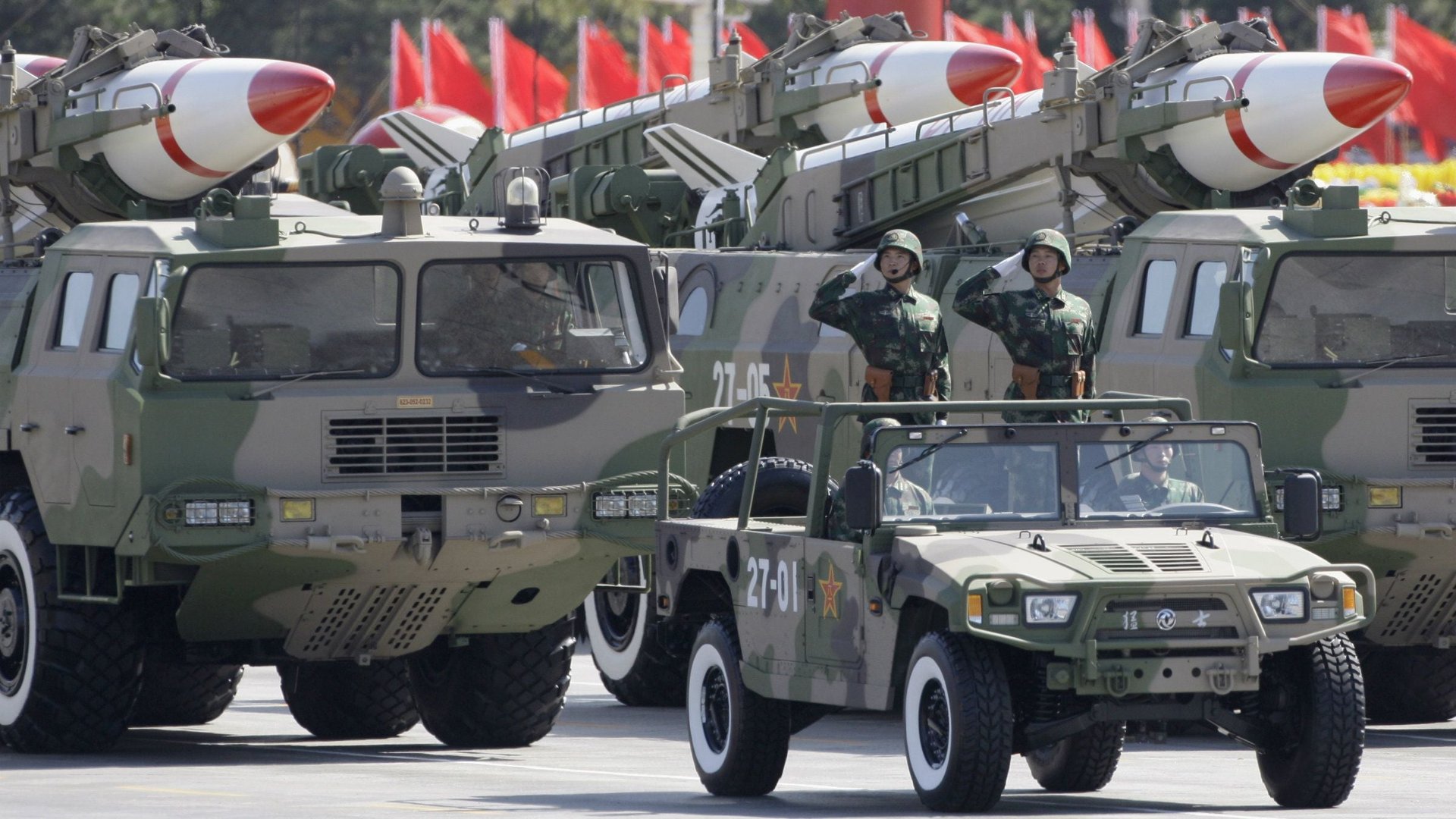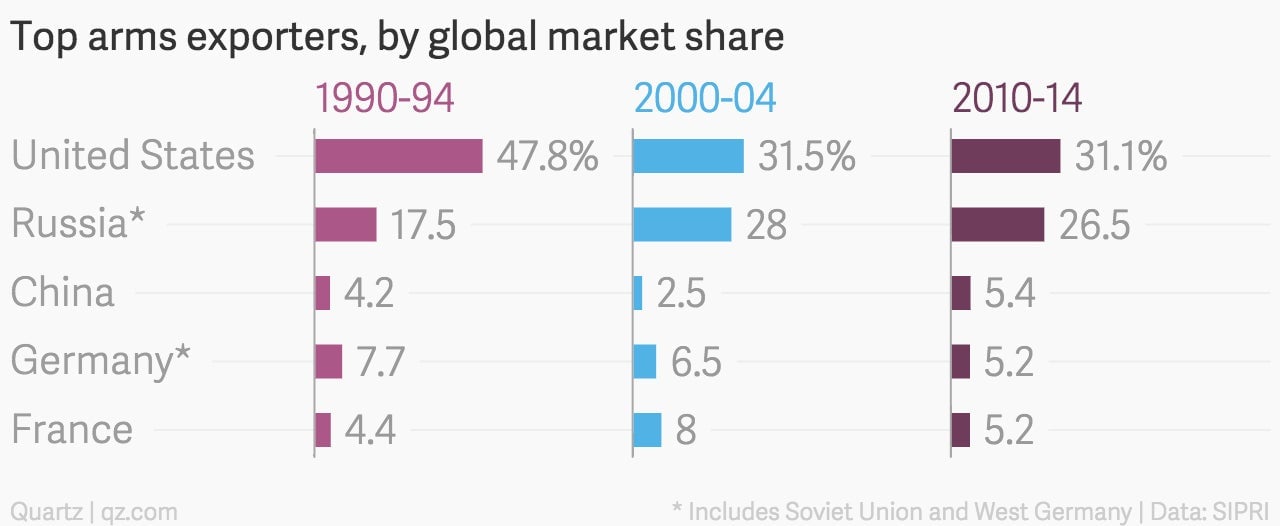Step aside, Germany—China is now the world’s third-largest arms exporter
Just as in other, less lethal industries, the world’s arms exporters are taking market share from their rivals. Even Germany’s mighty export machine has now succumbed.


Just as in other, less lethal industries, the world’s arms exporters are taking market share from their rivals. Even Germany’s mighty export machine has now succumbed.
Over the past five years, China’s foreign weapons sales have more than doubled—they rose 143%, to be precise—according to recently released data by the Stockholm International Peace Research Institute (SIPRI). That’s almost an order of magnitude faster than growth of the overall arms-export market during the same period, and puts China in third place—behind the US and Russia and narrowly ahead of Germany—in the export league table:

Despite its rapid growth, Chinese weapons manufacturers aren’t threatening to take the top spot any time soon—the US and Russia account for nearly 60% of global arms exports. But China’s inroads in the arms industry come from acting as a key supplier to buyers like Pakistan, Myanmar, and several states in Africa, including Sudan, which is not without controversy.
China’s growing export prowess reflects Beijing’s commitment to spending big on its own military, which in turn has funded the rapid development of the country’s arms suppliers. This can also be seen in the drop in China’s share of global arms imports—10 years ago it was the biggest importer, but has since dropped down the ranking:

When it comes to imports, India is now the biggest buyer by far. The country has ”so far failed to produce competitive indigenous-designed weapons and remains dependent on imports,” SIPRI says. Until that changes, its military ambitions will rely on weapons and equipment sourced from abroad—more specifically, from Russia, which supplies 70% of India’s arms imports.